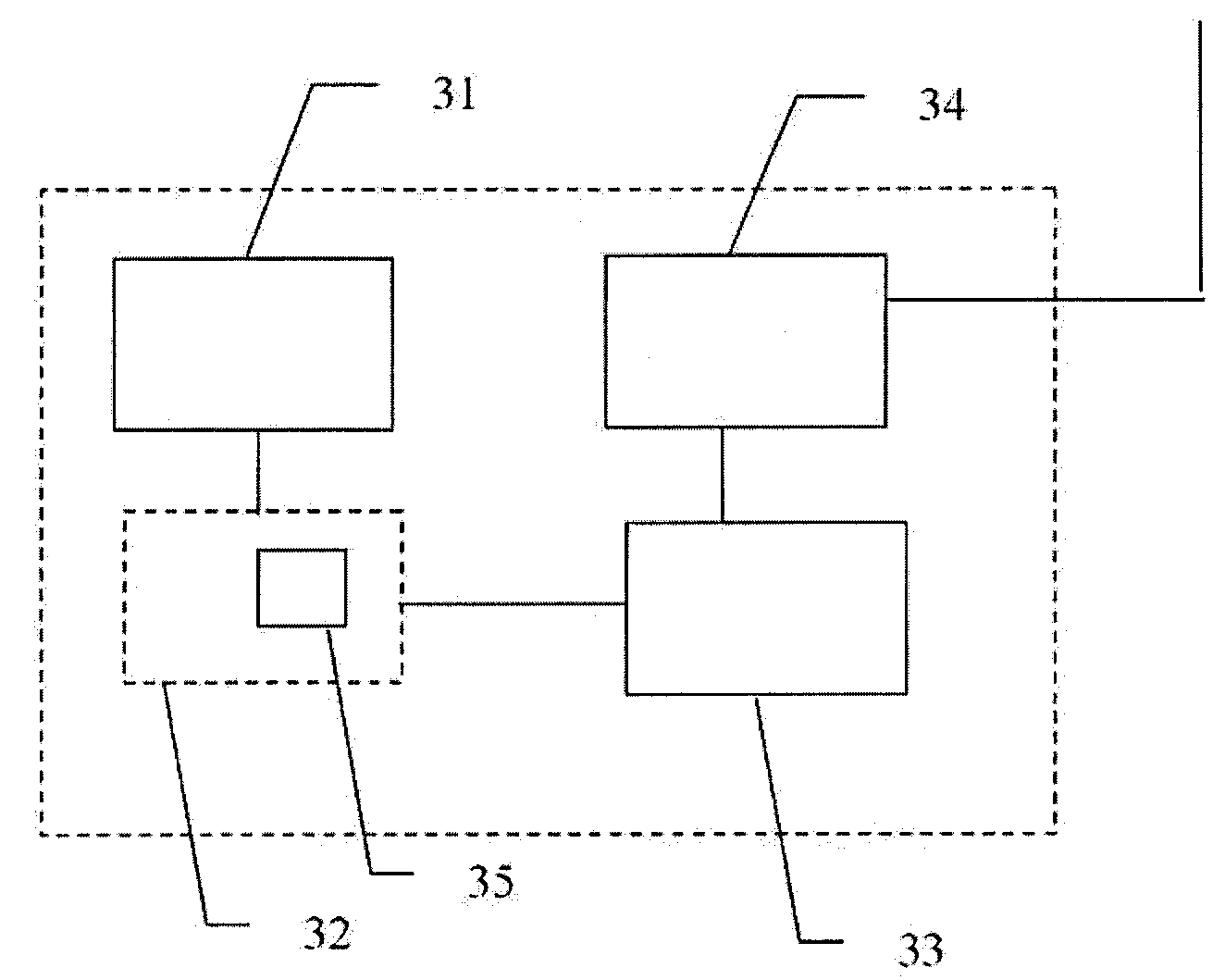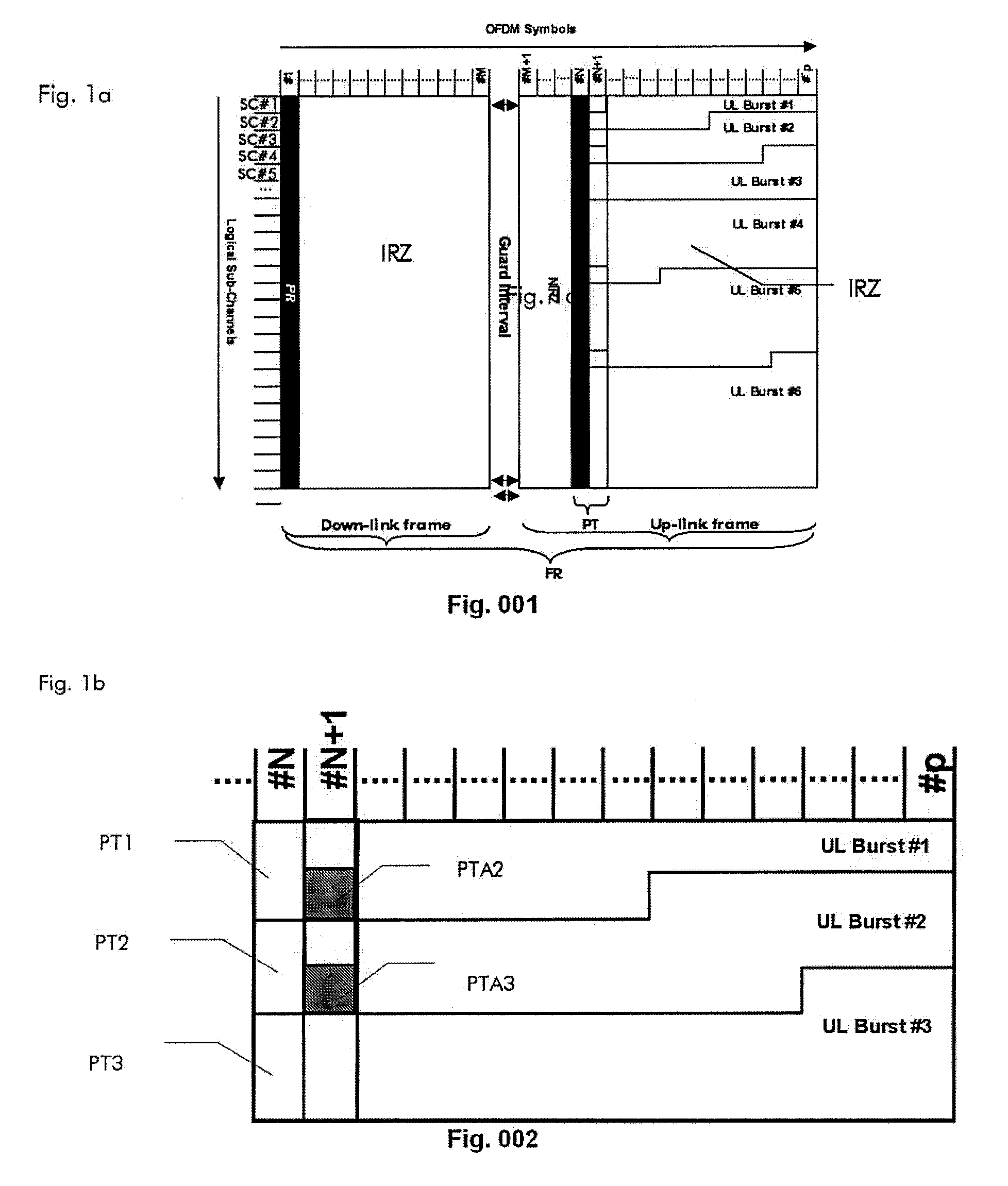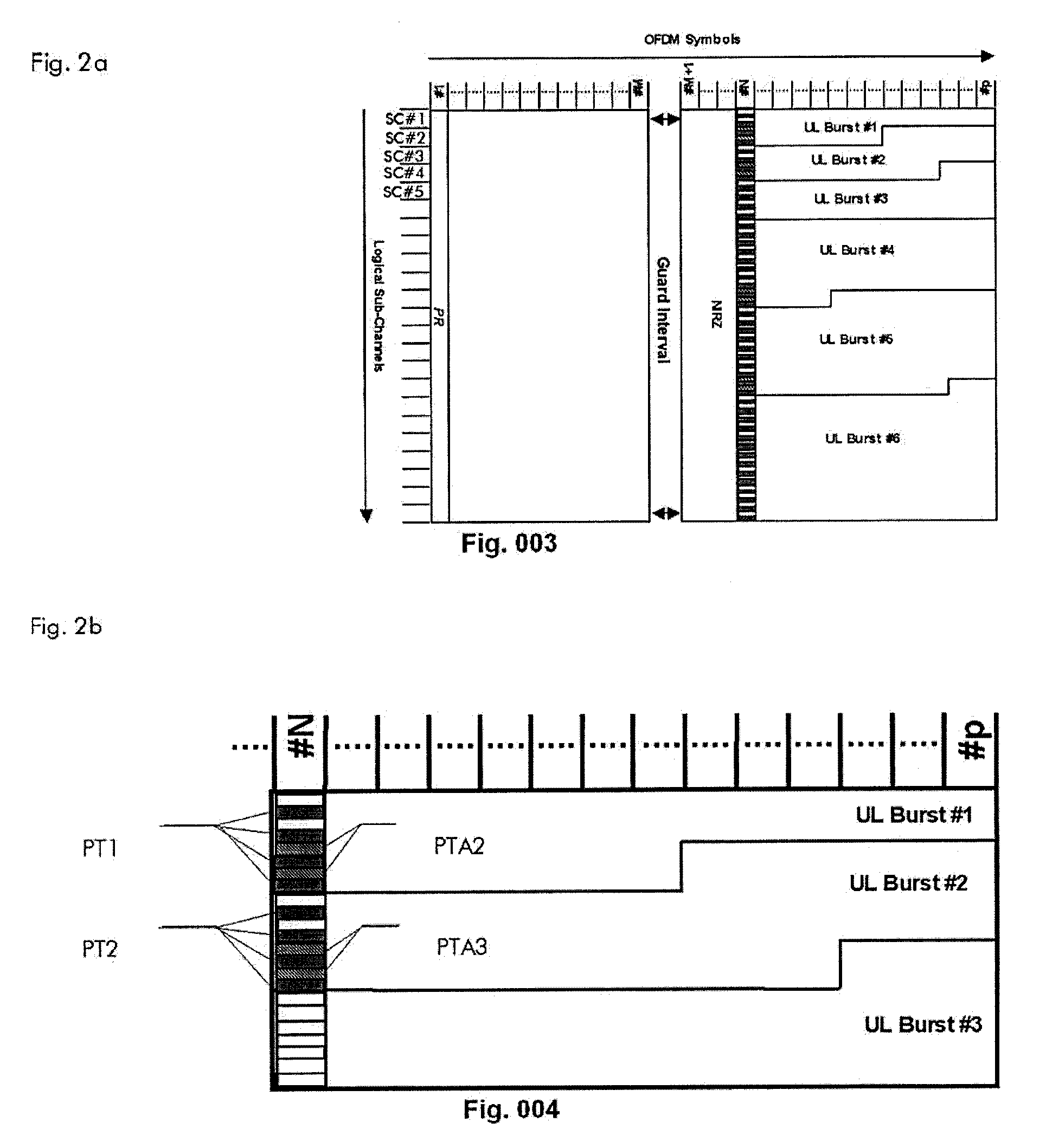Method for performing active cancellation of inter-cell interference in a cellular wireless access system
- Summary
- Abstract
- Description
- Claims
- Application Information
AI Technical Summary
Benefits of technology
Problems solved by technology
Method used
Image
Examples
first embodiment
[0033]FIG. 1a shows a pilot tone arrangement according to the present invention. This embodiment is illustrated using a multi channel communication network employing OFDMA as technology on each sub-channels. OFMDA allows resource allocations in frequency domain and in the time domain where orthogonality of the resource elements in frequency domain, the so-called sub-carriers, allows for a narrow spacing of the latter ones and thus and efficient usage of the frequency resource. A burst which is destined to an end user comprises consequently a frequency extension and a time extension. In this context, a frame comprises bursts which themselves are constituted of OFDM symbols sent on the different sub-channels.
[0034]In this embodiment of the invention, the radio communication system is a TDD (Time Division Duplex) system so that first a downlink frame is sent followed by an uplink frame. A person skilled in the art would nevertheless have no difficulty to map the present invention on ot...
second embodiment
[0061]In this second embodiment, the amount of OFDM symbols used for training purpose is reduced at the expense of having a lower number of training tones available.
[0062]For this second embodiment, an equivalent mechanism can be used in the downlink direction where the subscriber stations are providing dedicated pilot tones on allocations corresponding to the down-link allocations of the subsequent down-link frame on which they will receive payload data. Using these pilot tones for adaptive processing the base station, equipped with beamforming technology, will then form adaptive beam patterns for each down-link allocation in order to minimize the inter cell interference through appropriate null steering.
[0063]Further for this second embodiment, the same mechanism can be used in the downlink direction so that a base station may use the method according to the present invention when sending data in the downlink and processing for interference cancellation is provided by the subscrib...
third embodiment
[0064]FIG. 3a shows a pilot tone arrangement according to the present invention. The present invention will be illustrated using FIG. 3b which shows a detail of FIG. 3a, a first OFDM symbol (symbol #N) is provided for allocating dedicated pilot tones according to all the first, the third, the fifth, . . . , i.e. according to all odd numbered transmissions of the part of the frame under consideration (which the up-link in the given example, where it will be clear for those skilled in the art that the method could be equivalently applied to the down-link frame) for training of the interference cancellation algorithm.
[0065]For every second, fourth, sixth, . . . i.e. every even numbered allocation of the part of the frame under consideration, an additional OFDM symbol (symbol #N+1) is provided to allocate pilot tones for training of the inter-cell interference cancellation algorithm.
[0066]The number of maximum allocations of data transmissions, that can start during the duration of a si...
PUM
 Login to view more
Login to view more Abstract
- Sending on a sub channel a first set of pilot tones by the station sending a burst on said sub channel;
- Sending additionally in said frame and on said sub channel a second set of pilot tones by an additional station when a burst sent by said additional station starts on said sub channel.
Description
Claims
Application Information
 Login to view more
Login to view more - R&D Engineer
- R&D Manager
- IP Professional
- Industry Leading Data Capabilities
- Powerful AI technology
- Patent DNA Extraction
Browse by: Latest US Patents, China's latest patents, Technical Efficacy Thesaurus, Application Domain, Technology Topic.
© 2024 PatSnap. All rights reserved.Legal|Privacy policy|Modern Slavery Act Transparency Statement|Sitemap



